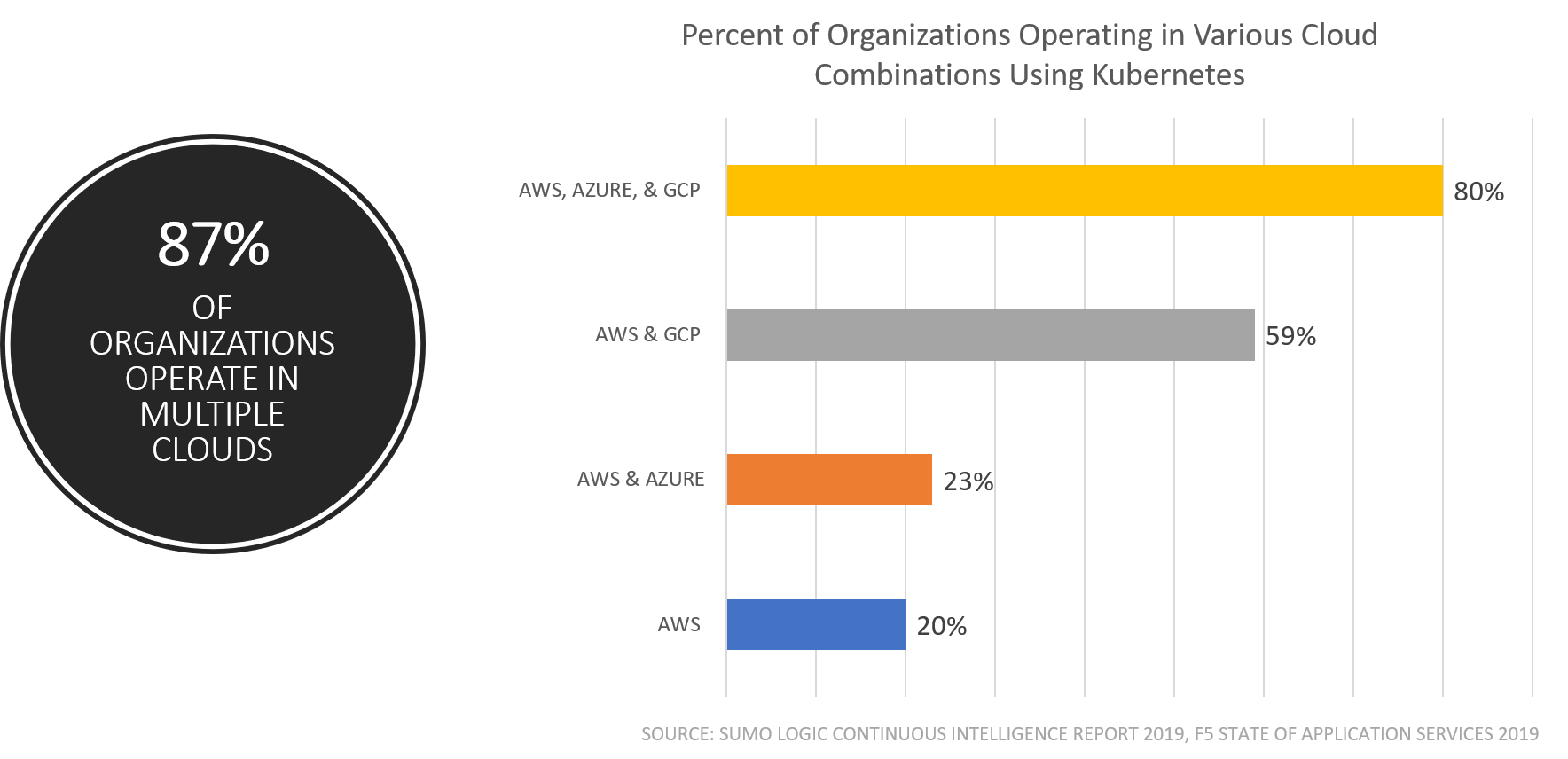Kubernetes is Winning the Multi-Cloud War
So says data from the most recent Continuous Intelligence Report from Sumo Logic
Most enterprise organizations are multi-cloud. So says our own research, as well as just about every other industry report I can find. In fact, I find consistently that less than 20% of organizations are shunning public cloud in general. Given the nearly ubiquitous use of SaaS to supply commoditized business functions (CRM, productivity, SFA, communications) it seems inarguable that organizations make use of multiple cloud properties to host a portion of their application portfolios.
Digging through Sumo Logic's latest data - compiled from actual usage of more than 2000 customers - we see an increase in Kubernetes usage specifically in AWS. In 2018, 20% of AWS customers used ECS (Amazon's container service). That grew to 22% in 2019. By comparison, in 2018 only 14% of AWS customers were using Kubernetes. In 2019 that percentage grew to 20%.
It is not surprising to discover that when we start looking at customers using more than one (multiple) cloud properties, Kubernetes clearly leaps ahead of cloud-provider offerings.

I say unsurprising because when you ask customers why they're adopting a multi-cloud approach, one of the top answers is always "avoid vendor lock-in." That's been a reason for multi-vendor everything in the enterprise for twenty and more years. It should surprise no one that holds true for public cloud, as well. After all, cloud is a product as surely as a network switch or data center server.
This central theme combines well with an oft-cited driver for Kubernetes adoption: portability.
Enterprises are clearly seeking a path that allows them the freedom to deploy applications in multiple environments without becoming locked into those environments (a.k.a. portability). Consider this finding from Heptio’s State of Kubernetes on the relationship between Kubernetes and lock-in:
Organizations with open source Kubernetes in production are more motivated to avoid lock-in (66% vs average 60%) and to enable multi-cloud (56% versus average of 48%).
And this nugget, too, from Portworx and Aqua Security’s 2019 Container Adoption Survey in which 19% of respondents are running apps in containers specifically to “enable users to run on multiple-cloud platforms.”
This desire for multi-cloud/portability to avoid lock-in is likely why we see a dearth of adoption of cloud specific application services in the Sumo Logic report and the understandable correlation between Kubernetes and multi-cloud adoption.
Granted, Sumo Logic is focusing only on AWS usage with respect to application services. That's primarily because the bulk (64%) of the Sumo Logic customer base resides in an Amazon cloud. But that means the data is solid when it comes to AWS. We can postulate - and probably correctly - that the same holds true for other cloud providers, as well. Because the driving factors behind the data remain true no matter the cloud.
That data shows that of the more than 150 application services offered by Amazon, the median adopted is 15. That's fewer than 10% of all services offered. In the top ten are those you would expect: compute, storage, database, network, and identity services. Core infrastructure.
Sumo Logic notes that "management, tooling, and advanced security services are adopted at a significantly lower rate than core infrastructure services."
I would submit that the continuing challenge of consistency - which tops our multi-cloud challenge list every year - is a key factor in the reluctance to adopt cloud-specific management, tooling, and advanced security services. Container orchestration falls into that "tooling" category and loosely into "management" as well. So, it's no surprise that organizations seeking consistency and actively avoiding lock-in are flocking to the more portable Kubernetes.
There are other valuable nuggets in the Sumo Logic report - including app infrastructure and security services usage in AWS, as well as some unsurprising data about Lambda adoption - so I encourage you to check it out. It's light on commentary and big on data, which makes it an easy and informative read.
